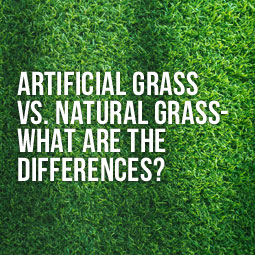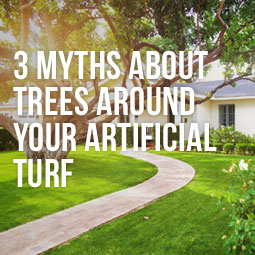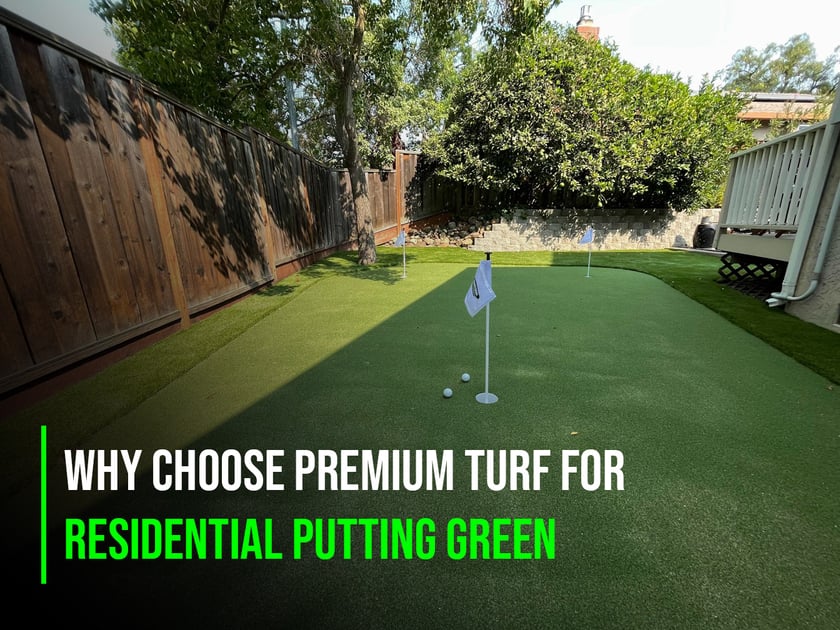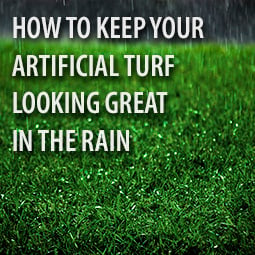 If you want a lawn at your home, you have two choices – natural grass or artificial grass. Which is best? Well, that depends on practical factors such as initial and ongoing costs and the amount of maintenance required as well as personal aesthetic and sustainability preferences. Artificial grass can do everything natural grass can do (often better), and it can do a lot of things natural grass cannot.
If you want a lawn at your home, you have two choices – natural grass or artificial grass. Which is best? Well, that depends on practical factors such as initial and ongoing costs and the amount of maintenance required as well as personal aesthetic and sustainability preferences. Artificial grass can do everything natural grass can do (often better), and it can do a lot of things natural grass cannot.
Let’s compare.
Total Cost of Ownership
For natural grass, you can plant seeds or, at much greater expense, lay sod. After that, you have ongoing expenses to maintain the lawn – equipment and supplies to mow, trim, weed, feed, and re-seed.
Installing artificial grass costs quite a bit more than a seeded or sod lawn. However, there is little to no maintenance expense over the life of the turf. With those savings, the turf pays for itself in relatively short time. The lawn will far outlast that repayment period, and the savings will never expire. There are financing options available for homeowners who prefer to spread the initial cost of artificial grass over several months.
Care Requirements
One of the biggest differences between artificial turf and natural grass is the level of care. Natural grass requires several hours of work each week to keep it looking its best. Slack off, and your lawn will quickly advertise that lack of attention.
Artificial turf on the other hand, requires only minimal maintenance. Rinsing the lawn occasionally removes dust and potential odors from pet waste. Brushing or raking the blades keeps them upright and fluffy, even in high traffic areas. And, of course, you’ll want to pick up, rake, or blow away any fallen leaves or other organic clutter that lands on the lawn. That’s about it, year in and year out.
Water Usage
No homeowner, anywhere, wants a high water bill. Unfortunately, with natural grass, there is no way around that. Depending on the variety and its hardiness, an 800 square foot lawn will consume about 150,000 gallons of water every year. Here in the Bay Area, that kind of water wastage is unthinkable, aside from the cost.
In contrast, an artificial grass lawn twice that size will not require any water at all. If pets use the grass as a potty zone, the only water regularly needed will be just enough to rinse the area with a hose.
Aesthetics
Modern varieties of artificial grass are so realistic, it can be tough to distinguish them from the real thing. But there is one major difference when it comes to aesthetics. Fake grass always looks perfect --
the same height, color and texture, no matter the season, weather, or wear.
You just can’t say that about natural grass. Variations in light and moisture, seasonal issues, pet challenges, and general wear and tear can all cause the grass to appear mottled instead of richly green, or even yellow or dead in spots. Plus, grass grows. The only way to maintain desired, uniform height is to constantly mow.
So, What’s Your Preference?
Natural grass and artificial grass are both viable options for residential lawn. It’s your yard, so you’ll want to weigh the pros and cons of each to determine the right choice for you. How much time and money do you want to invest in your lawn, over time? How will you use the lawn? Do you have kids and/or pets? How long do you plan to keep your home?
And, if we may make one more suggestion, why not come by our Heavenly Greens showroom and get a feel for our varieties of artificial grass up close and personal, as they say? You can see our products for yourself, ask all the questions you want, and get solid, helpful advice from our team of fake grass experts.












